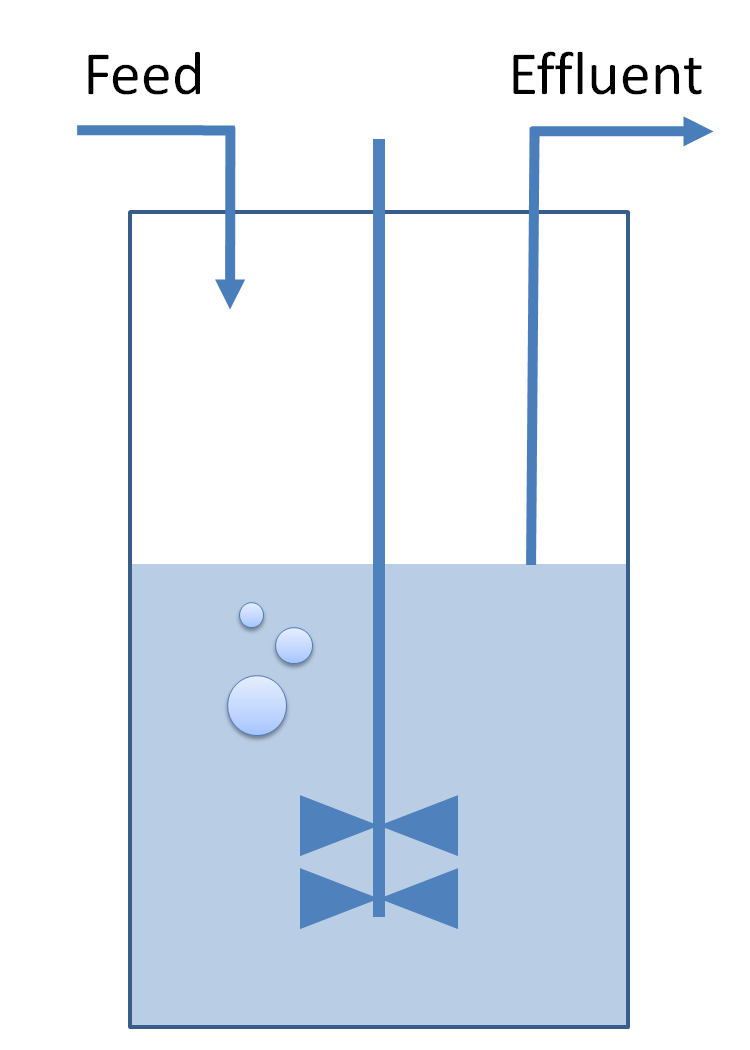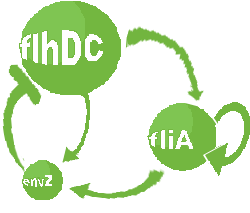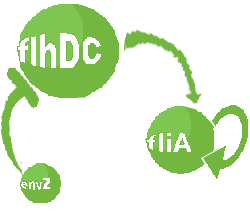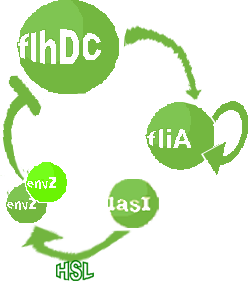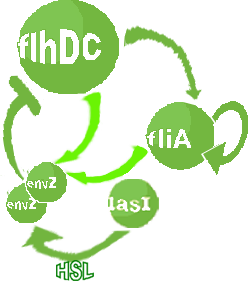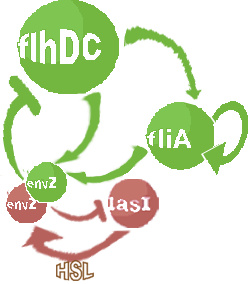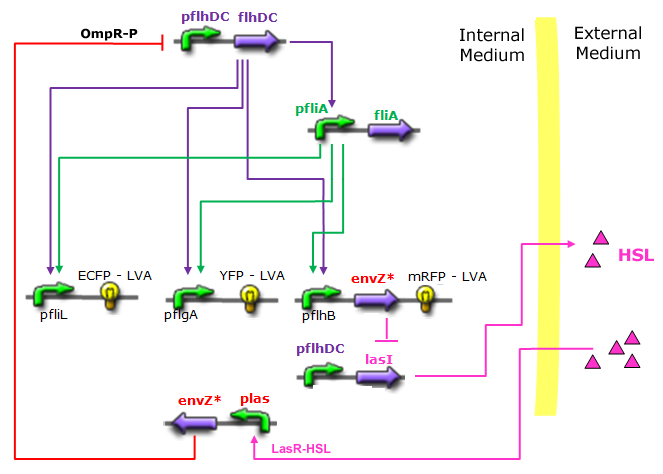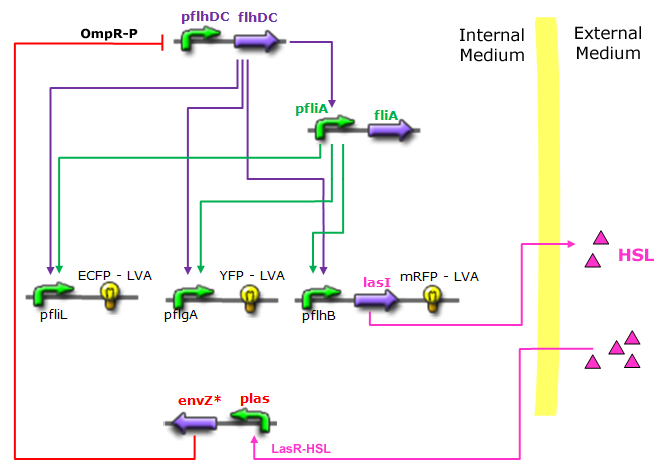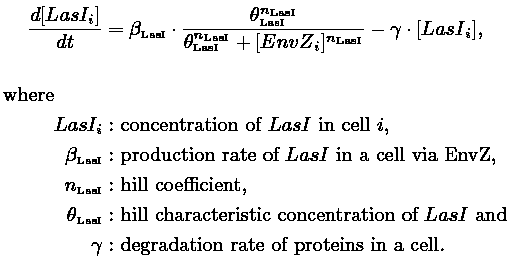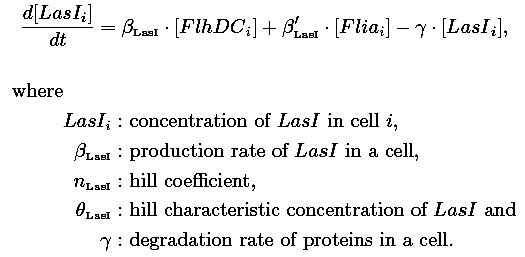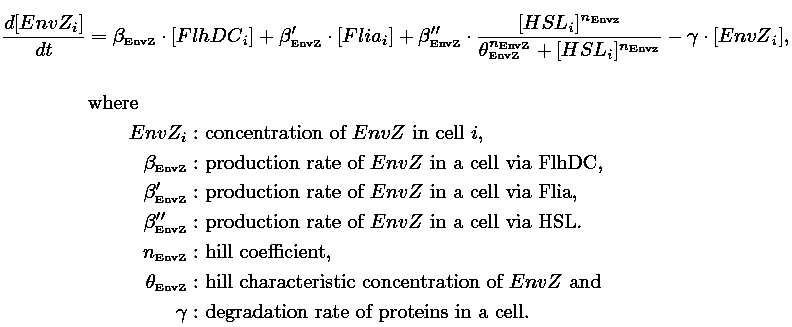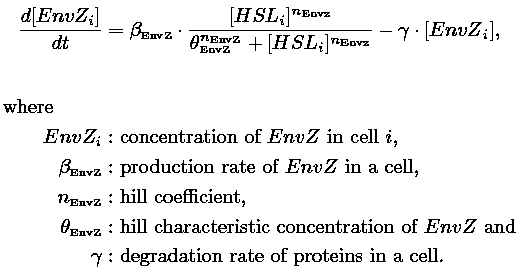Team:Paris/Analysis/Construction2
From 2008.igem.org
(→Alternatives Description) |
(→Common Description) |
||
| Line 51: | Line 51: | ||
== Common Description == | == Common Description == | ||
{|align="center" | {|align="center" | ||
| + | |-style="background: #ffffff; text-align: left;" | ||
| + | |Use of chemostat: | ||
|-style="background: #ffffff; text-align: center;" | |-style="background: #ffffff; text-align: center;" | ||
|[[Image:DescriptionCommonDynamicsPart1.png|center|600px]] | |[[Image:DescriptionCommonDynamicsPart1.png|center|600px]] | ||
| + | |-style="background: #ffffff; text-align: left;" | ||
| + | |Use of quorum sensing: | ||
|-style="background: #ffffff; text-align: center;" | |-style="background: #ffffff; text-align: center;" | ||
|[[Image:DescriptionCommonDynamicsPart2.png|center|600px]] | |[[Image:DescriptionCommonDynamicsPart2.png|center|600px]] | ||
| + | |-style="background: #ffffff; text-align: left;" | ||
| + | |Use of some interactions from the [[Team:Paris/Network_analysis_and_design/Core_system|core system]]: | ||
|-style="background: #ffffff; text-align: center;" | |-style="background: #ffffff; text-align: center;" | ||
|[[Image:DescriptionCommonDynamicsPart3.png|center|600px]] | |[[Image:DescriptionCommonDynamicsPart3.png|center|600px]] | ||
Revision as of 09:24, 29 October 2008
|
Model Construction
IntroductionIn this section, we investigate possible improvements of the core system. Our objective is twofold : the system has to provide sustained oscillations and these oscillations should be synchronized amongst a population of cells. To this aim we explore designs inspired by quorum sensing and model in a chemostat cell growth and species diffusion outside cells. We consider two models relaying on different designs principles. ↓ To joint our quest for alternatives click here! ↑
Modeling AlternativesThe proposed models are:
Both the bimodular and unimodular systems describe events that happen not only at the cellular level (as in the core system) but also at the population level due to interactions needed between a cell and its environment. In the following sections, we first describe population modeling (the common part among our two proposed models) to then focus our attention to the characteristics that are exclusive to each of the modeling alternatives. Common Description
↓ read more on common dynamics... ↑
Alternatives Description
↓ read more on alternatives description... ↑
Kinetic parameter valuesThe following table sumarize our findings. Theses parameters values are used during the simulations. Most them are found in literature others are obtained from further analysis.
|
||||||||||||||||||||||||||||||||||||||||||||||||||||||||||||||||||||||||||||||||||||||||||||||||||||||||||||||||||||||||||||||||||||||||||||||||||||||||||
 "
"

